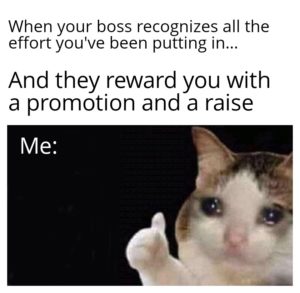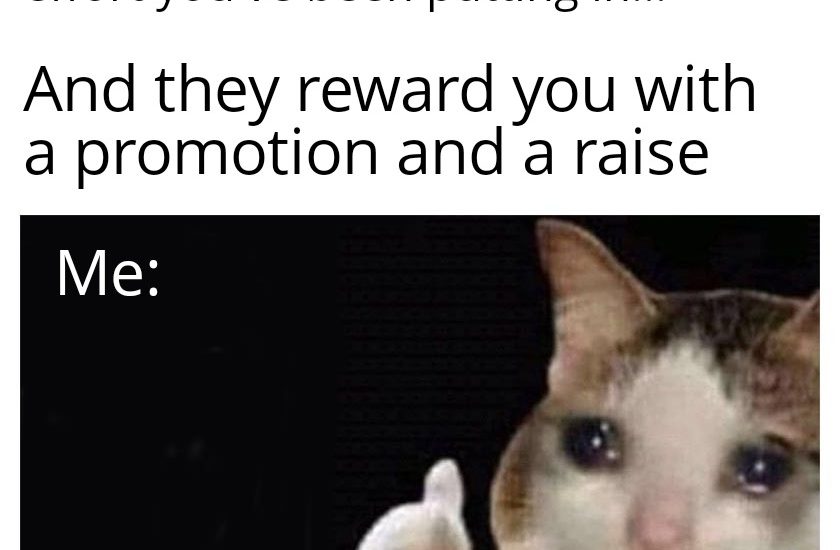
This meme presents procrastinating your job while on the clock and doing other things, as something you can do. In a way, it also implies that if you’re being unproductive for an entire month at work that you won’t be fired, but instead you’ll simply get a checkup of “Hey, I see your productivity has dropped, what’s going on?” Which is quite a gamble to say the least. Not contributing and completing your job pushes more things onto your coworkers, but more importantly, you’re risking your own employment and financial security. You might not get a checkup, instead you might get a “You haven’t been doing what your duties are, today is your last day.” And that would be quite unfortunate

Do you think this meme will have the same viral quality? explain?
No, I don’t think it will. Connecting to the internal side of wanting to procrastinate and doing what we actually want is something that everyone can relate to. Whereas, the thought of having to go to work and do your normal duties can be stressful and unsatisfying. So, I don’t believe my meme would go as far as the original.
What would we have to do about the digital ecosystem in order for good news or uplifting content to travel faster and more than bad news?
I think we would have to present memes and good news in a more relatable or connective way. Memes that people relate strongly with will gather more shares than ones that they don’t.
Is there a way communication organizations could be designed or regulated to balance the bad/good news?
Yes, to spread good news more, I think we would have to alter and regulate how bad news is presented, specifically by the mainstream media. In most cases, news articles are presented in a click-baity, read me now, I’m going to provoke emotions so that you read/share this article this second, way. If we regulate how news is presented, (so that it will be more factual and less provocative,) then I think that would allow more good news through.

You must be logged in to post a comment.